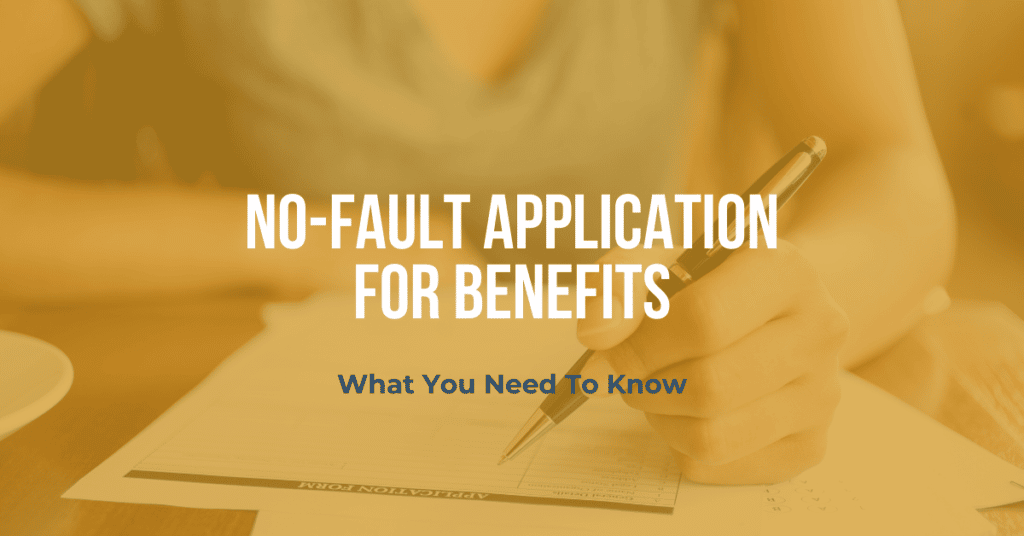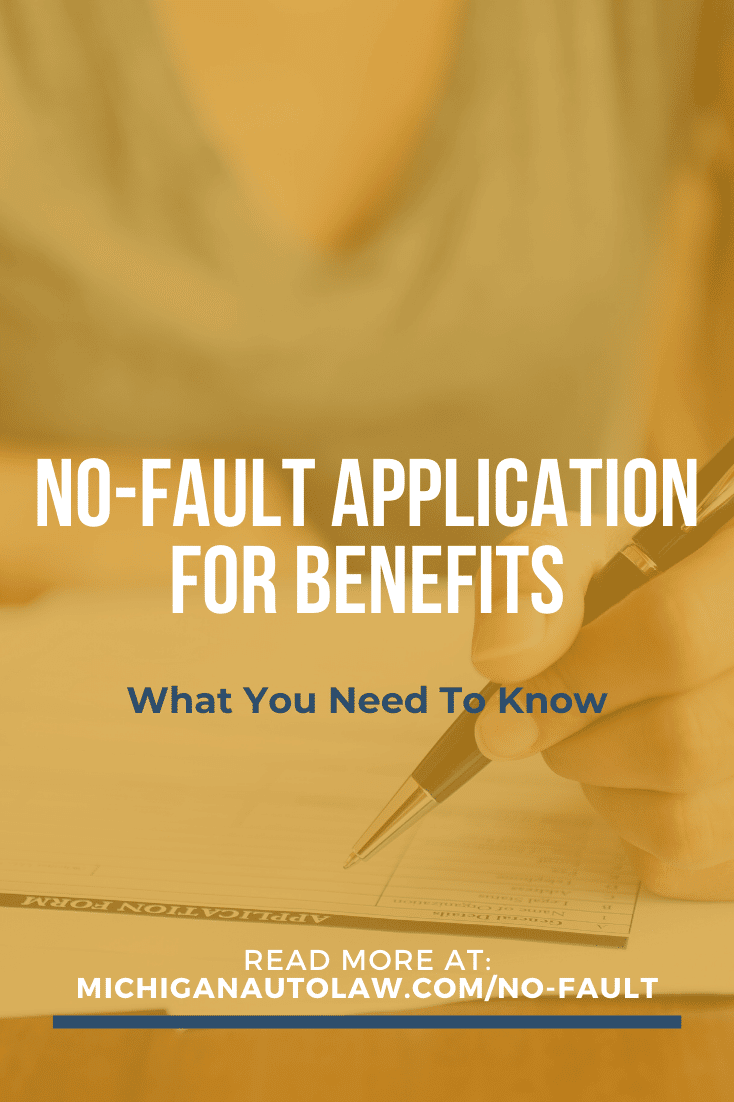
No-Fault Application For Benefits: What You Need To Know About Filing
Michigan car accident victims must file a timely No-Fault application. This filing is what triggers victims’ legal rights to claim vital personal protection insurance benefits to pay for medical bills and lost wages, which they will need to recover from their injuries and start rebuilding their lives.
What is a No-Fault application?
The No-Fault application is the first official, legal step that a person must take in order to make a claim for PIP benefits after being injured in a car accident. It is also frequently referred to as an “application for No-Fault benefits” or a “written notice of injury.”
The benefits you will be entitled to as a result of the timely filing of your No-Fault application include:
- Medical Expenses – Your accident-related medical bills and expenses will be covered up to the dollar amount of the PIP medical benefits coverage level selected in the auto insurance policy through which you are claiming PIP benefits.
- Medical Mileage – PIP benefits cover your transportation costs for traveling to and from medical appointments at doctors’ offices, hospitals and rehabilitation and therapy clinics. These covered costs include mileage and/or bus, taxi or Uber/Lyft fares in the event that you do not drive.
- Wage Loss – If your accident-related injuries have disabled you from returning to work after your car accident, then your PIP benefits will reimburse you for the wages you have lost.
- Replacement Services – PIP benefits will pay up to $20 per day during the first years after your car accident to reimburse people who help you by performing “ordinary and necessary services” that you can no longer do because of your accident-related injuries and limitations.
- Attendant Care – If your car accident-related injuries require you to have attendant care – whether it is on a 24/7 or more limited basis – then PIP benefits will pay the cost of that attendant care.
When must you file an application?
Your No-Fault application for benefits must be filed with your car insurance company WITHIN ONE YEAR from the date of your car accident.
To put it another way, you must file with your auto insurance company “within 1 year after the accident.” (MCL 500.3145(1))
If you fail to file on time – WITHIN ONE YEAR from the date of your car accident – then you will forever lose your right to claim any benefits to which you might be otherwise be entitled if you had filed on time.
Who do I file a No-Fault application for benefits with?
After being injured in a car accident, you will file an application for benefits with the auto insurance company that is responsible for paying your claim, which is based on Michigan law’s of “priority” rules. Generally, a car accident victim will file his or her own auto insurance company.
Alternatively, if a car accident victim does not have his or her own policy, then the victim may file his or her application with the insurer for a spouse or a family member who lives in the home. If none of those options are possible, then the car accident victim will file with the Michigan Assigned Claims Plan – which assigns car insurance companies to handle claims for victims who don’t have coverage.
Importantly, if you were injured while riding in a taxi, an Uber or Lyft, on a motorcycle or in a vehicle provided by your employer, then different rules for who pays your No-Fault benefits will apply and, thus, affect whom you file your application with.
What information do I include in the No-Fault application?
A car accident victim must include his or her name and address in the No-fault application and must “indicate in ordinary language . . . the time, place, and nature of the person’s injury.” (MCL 500.3145(4))
In its unanimous order in Dillon v. State Farm Mutual Automobile Insurance Company, the Michigan Supreme Court elaborated on what information a car accident victim must provide in the application in order to satisfy the “nature of the person’s injury” requirement:
“Taken together, [the No-Fault law’s ‘application’ or ‘written notice of injury’ requirement in MCL 500.3145(1)] requires only the kind of notice that an ordinary layperson can provide. A description of symptoms that are traceable to a diagnosed injury is sufficient to constitute such notice. The statute does not require a claimant to provide a precise medical diagnosis, as this would not constitute ‘ordinary language.'”
Where do I get a No-Fault application for benefits?
Generally, the car insurance company with which you will be filing your application for benefits will have its own, standard, pre-printed form for you to fill out. So you should ask your auto insurance company for a copy of its application. Similarly, the Michigan Assigned Claims Plan has its own form.
To give you a sense of the information that you may be asked to provide, click here to see the Michigan Assigned Claims Plan’s application.
What happens if I don’t file a timely application?
If you file a late No-Fault application or if you don’t file one at all, then you will be disqualified from receiving any benefits. You will never start receiving them. And you will lose your legal right to claim benefits as well as your legal right to sue your auto insurance company to pay them.
A auto insurance company is not obligated to pay benefits nor can it be sued for non-payment if the auto accident victim failed to give an “application for benefits” or otherwise provide a “written notice of injury” to the insurer within one year of the accident.
You MUST apply for benefits WITHIN ONE YEAR of the accident!
This is really important because every year, I am contacted by people who thought they were going to get better — but did not. These people went on to undergo very expensive medical treatment, such as back surgery, that has required them to miss months of work. Because they did not file an application for benefits within one year, it is too late and there’s nothing I can do to help them get their insurance benefits.
Injured and need a lawyer? Call Michigan Auto Law
If you have been injured in a car accident and you have questions about your legal rights to Michigan PIP benefits, you can call toll free anytime 24/7 at (800) 968-1001 for a free consultation with one of our experienced auto accident attorneys. You can also get help from an experienced accident attorney by visiting our contact page or you can use the chat feature on our website.






